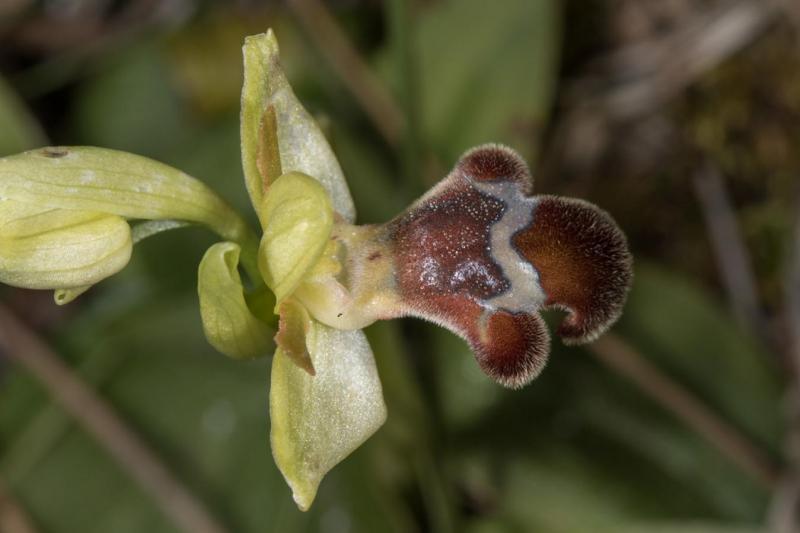Ophrys omegaifera
Also known as: The Omega Ophrys or Ophrys fusca ssp. dyris Ophrys fusca var. dyris Ophrys fusca ssp. hayekii Ophrys omegaifera f. kelleri Ophrys omegaifera var. dyris Ophrys omegaifera var. fontinalis Ophrys omegaifera ssp. algarvensis Ophrys omegaifera ssp. basilissa Ophrys omegaifera var. basilissa Ophrys mirabilis Ophrys omegaifera var. maculata Ophrys omegaifera ssp. hayekii Ophrys appolonae Ophrys polycratis Ophrys algarvensis Ophrys omegaifera ssp. omegaifera Ophrys omegaifera var. fleischmannii Ophrys fusca ssp. omegaifera Ophrys atlantica ssp. hayekii Ophrys omegaifera ssp. dyris Ophrys basilissa Ophrys omegaifera ssp. fleischmannii Ophrys fusca ssp. fleischmannii Ophrys omegaifera ssp. israelitica Ophrys lutea var. fleischmannii Ophrys omegaifera ssp. fleishmannii Ophrys fleischmannii Ophrys sitiaca Ophrys heldreichii Ophrys israelitica Ophrys dyris Ophrys lutea ssp. omegaifera Ophrys lenae Ophrys funerea ssp. fleischmannii Ophrys atlantica ssp. dyris Ophrys iricolor f. omegaifera Ophrys fusca f. omegaifera Ophrys dyris f. kelleri in the subfamily: Orchidoideae
General Information
The Omega Ophrys is a medium sized sympodial cool to warm growing terrestrial orchid belonging to the sub family Orchidoideae.
Plant Description
Sympodial. Grows to 20-25cm.
Care Notes
These orchids live on the forest floor, often in dead leaves or humus, yet still have the organs that would allow them to store water given unpredictable or intermittent weather conditions. They require some moisture to always be present in the soil, but not much. Water when the soil approaches dryness and don't let it dry out completely. Some growers place pots in saucers to retain water, but this may create an environment that is too wet, leading to rot.
In most areas these can be grown in the garden under trees or in sheltered locations, as long as they are reasonably protected from huge weather swings, excessive heat, and frost.
Climate
Grows at low to high elevations. Rainfall ranges from 1mm to 170mm per day, heaviest in December and lightest in July. Humidity ranges from 57% to 79%, highest in January and lowest in April. Temperature ranges from 6C to 27C, highest in July (19C to 27C) and lowest in January (6C to 13C).
Fertiliser
Apply liquid based fertiliser per recommended directions. They can benefit from a high phosphate fertiliser leading up to flowering season, followed by a high nitrogen fertiliser when new growth appears, and a balanced fertiliser in other times. These orchids can also tolerate slow release fertiliser applied 1-2 pellets per cup (250ml) of media.
Use balanced fertiliser during Spring and Summer. Apply fertiliser regularly at half strength year round. Use a high Nitrogen fertiliser during Spring and Summer. Use a high Phosphorous fertiliser during Summer.Potting
These plants can be sensitive to repotting though should not require repotting regularly. Repotting should be done when the mix has broken down to the point that it doesn't absorb water or holds onto water for far too long, usually the plant shows a decline in growth as well.
The mix should be free draining, with a blend of 30% inorganic ingredients such as coarse sand, gravel or perlite, mixed in with about 70% organic ingredients such as peat, leaf litter or decomposed bark. Avoid commercial potting mixes as they can vary wildly and may contain "wetting agents" that can hold onto water for loo long, causing rotting and stunted growth.
Repotting is best done annually.




















